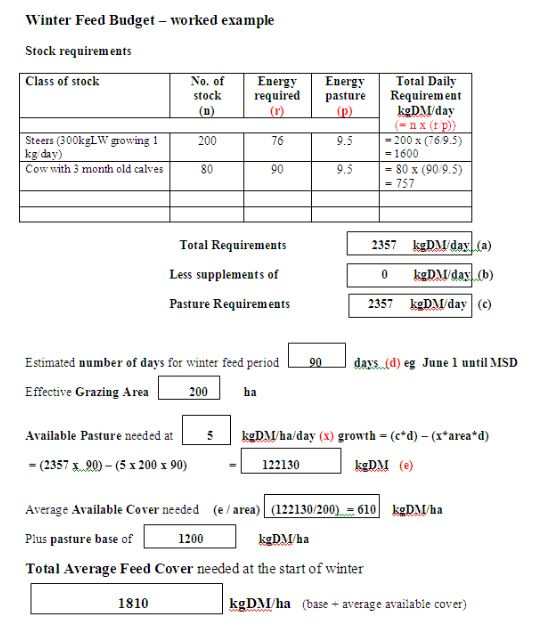How to build an autumn feed wedge
Fiona Baker, Meat Industry Development Officer from the Victorian Department of Environment and Primary Industries, shares her advice for building an autumn feed wedge.
During autumn and into winter, pasture growth rates and rates of new leaf emergence can drop to such low levels that paddock feed can easily be exhausted, resulting in overgrazed pastures and the need for supplementary feeding.
The term ‘building a feed wedge’ refers to growing more pasture than stock can consume during late summer and early autumn to deliver a bank of feed for consumption during winter. This allows feed to be preserved where paddocks may otherwise be grazed out, minimising soil damage and potentially reducing supplementary feed requirements.
What level of feed should be targeted?
Feed budgeting provides the answer to how much feed is required to be conserved in a feed wedge.
The autumn and winter feed budget focuses on budgeting and allocating feed during the period where animal consumption exceeds pasture growth. This may vary in different regions of southern Australia.
The example used below describes a 200ha property developing a winter feed budget during autumn to allow 80 autumn calved cows and 200 steers to be carried through winter from 1 June to 1 September in an average growing year. The property details are:
- 200 steers weighing 300kg growing at 1kg/day
- 80 cows, in fat score 2.5, with 3 month old calves at foot
- expected average pasture growth rate during winter months (1 June to 1 September) of 5kg DM/ha/day over the property
- pastures should not be grazed below 1,200 kgDM/ha to maximise winter growth rates

According to this example, the total average feed cover required across the property at on 1 June is 1,810kg DM/ha.
The property has assessed their pastures on 1 March and determined their current average pasture cover is 1,220kg DM/ha.
The average pasture cover needs to be increased by 590kg DM/ha, or 118,000kg DM over the entire property, during the next three months to meet the pasture target for 1 June.
How to achieve the feed wedge target
If the total amount of pasture grown exceeds pasture consumption, the average pasture cover across the farm will be increasing. Stocking rates may be able to be adjusted to achieve the surplus required for the feed wedge.
In this example, pasture consumption on 1 March is 9.32kg DM/ha/day and pasture growth rate is 12kg DM/ha/day. The average pasture mass across the property is increasing by 2.68kg DM/ha/day. This surplus of pasture will build to 241kg DM/ha, or 48,200kg DM over the coming three months, assuming the level of production remains constant.
Feeding some supplementary feed during autumn can be more efficient than feeding the same amount of supplement in winter when pasture growth rates are reduced. This is due to reduced pasture consumption as a result of the supplementary feeding, allowing additional pasture to be grown to contribute to the feed wedge.
To illustrate this example, when feeding hay in autumn, the pasture is growing at around 10kg DM/ha. If the same amount of hay is fed in winter, when the pasture is only growing at 5kg DM/ha, only half the potential pasture growth over the period is realised (10kg DM/ha in autumn compared with 5kg DM/ha in winter).
Another strategy could include utilising urea to boost the autumn and winter pasture growth rate. With adequate moisture a 10:1 response in growth rate is likely in grass based southern pastures from applied nitrogen over autumn. If 40kg N/ha (~ 80kg urea/ha) is applied, an extra 400kg DM/ha may be grown.
Remember, this is just an estimate or budget of what may happen. Conditions often change so monthly monitoring of how much pasture is on hand is important.
More information
Fiona Baker
Meat Industry Development Officer, Victorian Department of Environment and Primary Industries
P:03 5624 2234
E: fiona.baker@dpi.vic.gov.au
For more information about determining animal consumption figures, access More Beef from Pastures Tool 3.5 of Module 3: Pasture utilisation.



